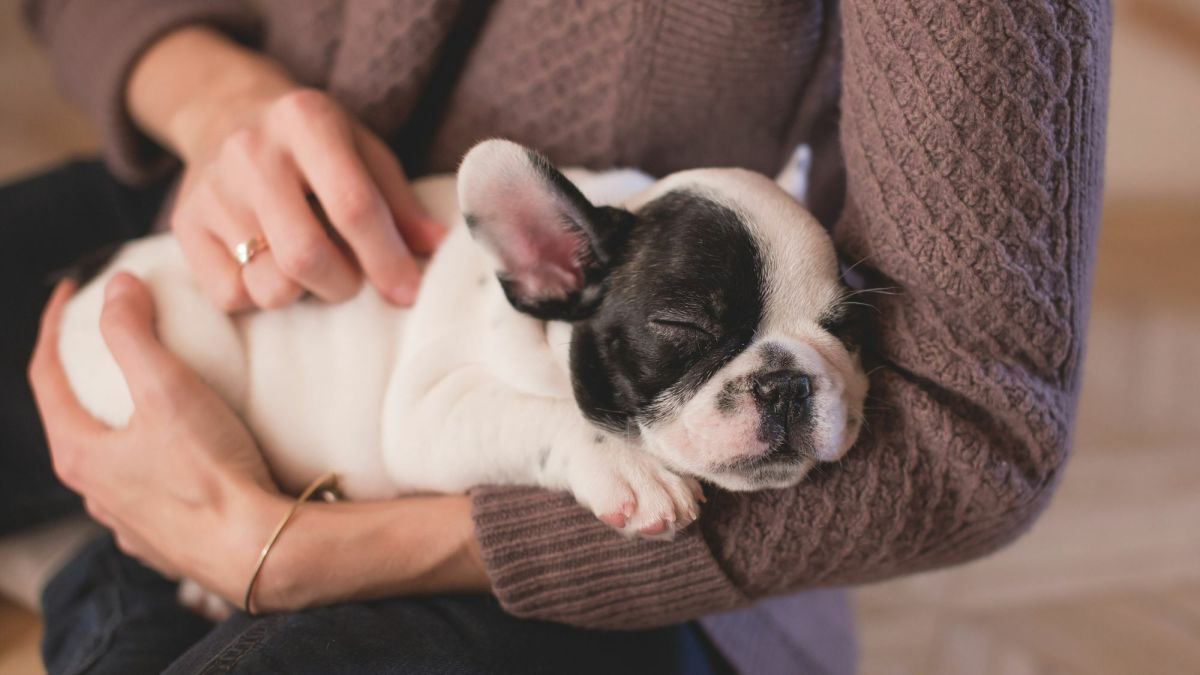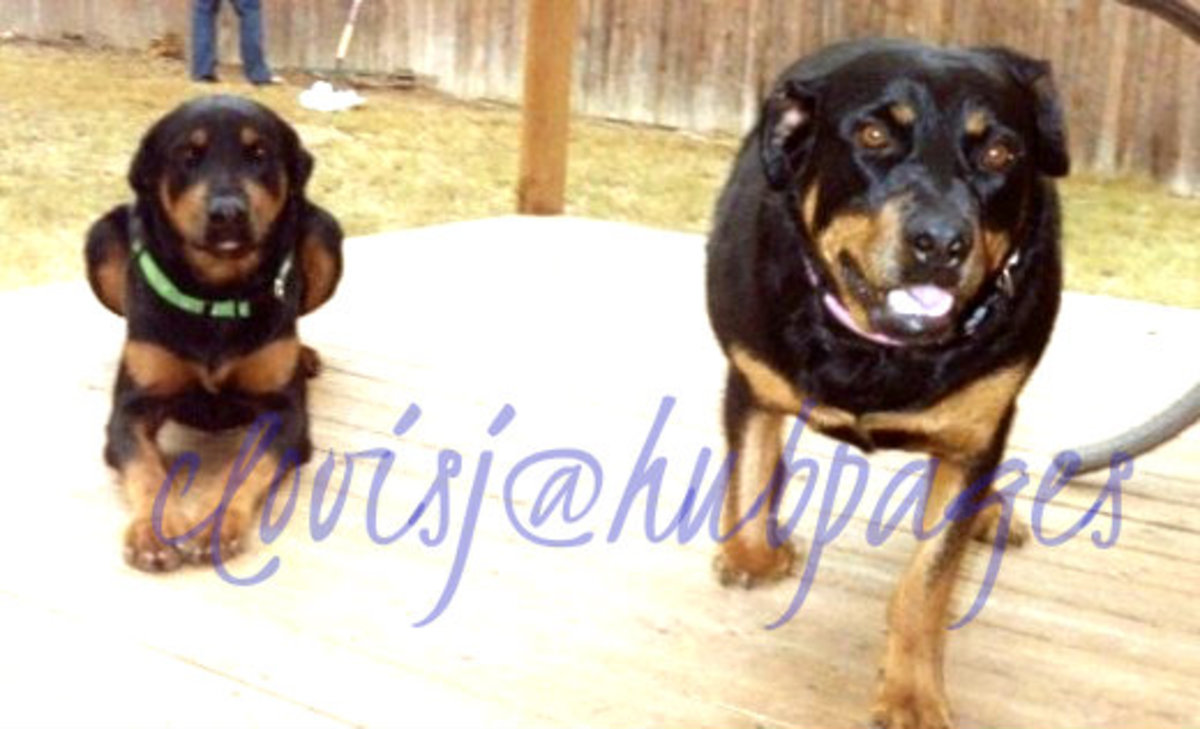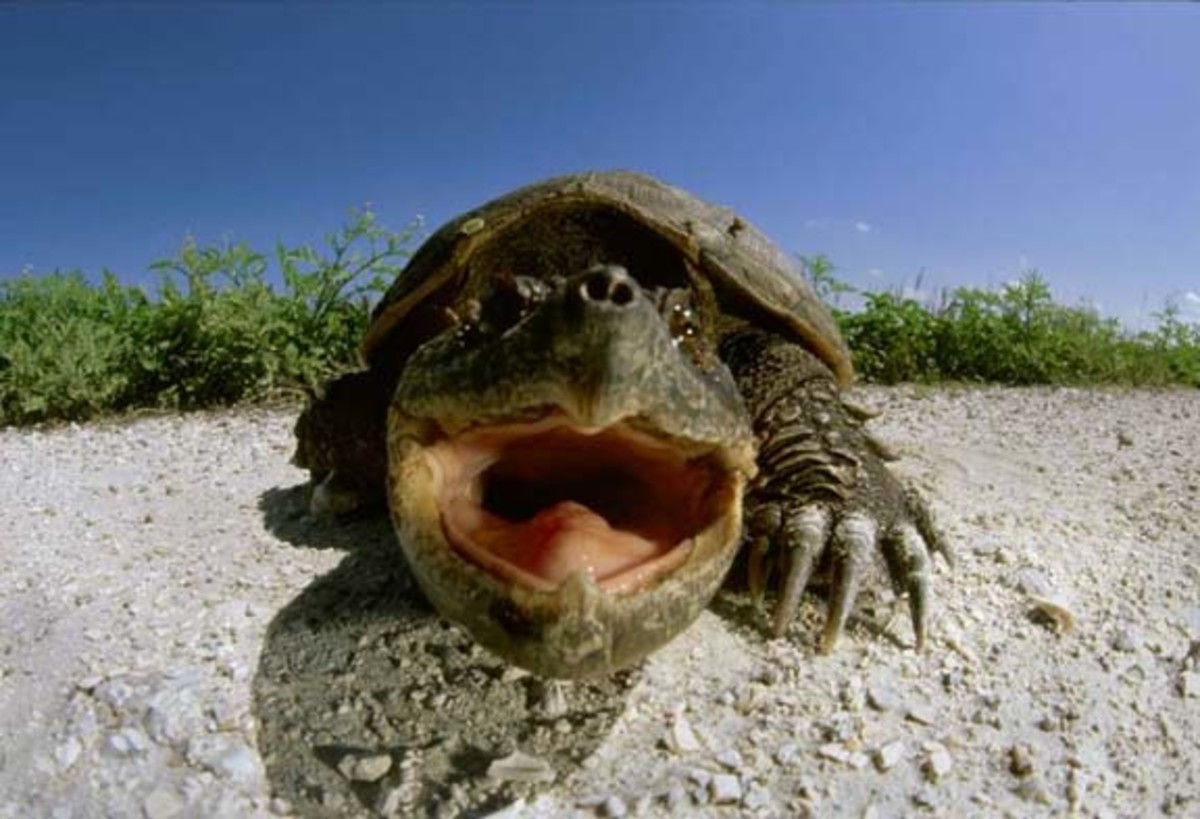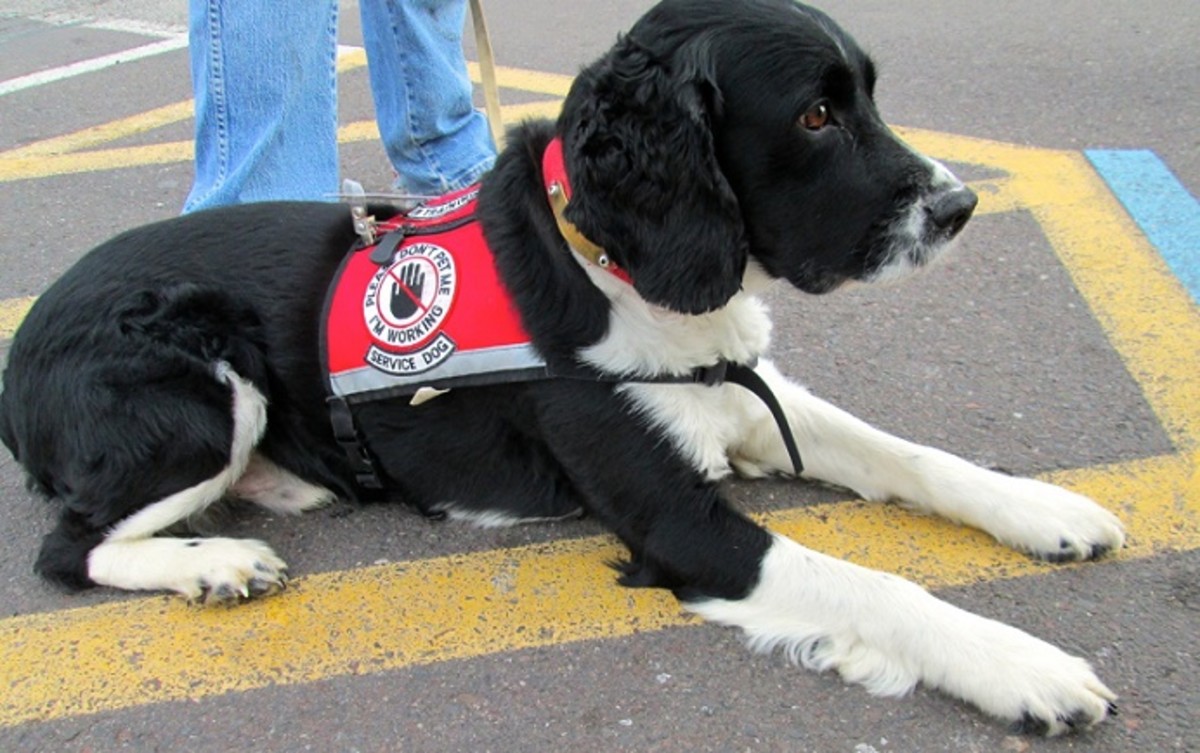Handling and Restraint Exercise
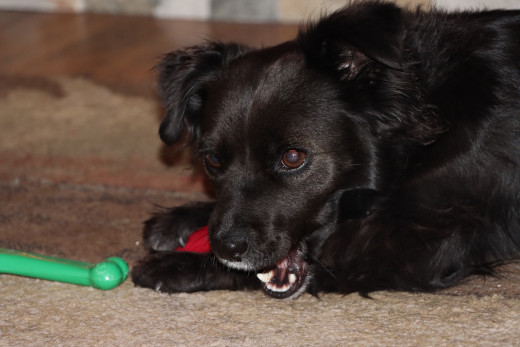
Why Is This Exercise Important?
The handling and restraint exercise is something that we teach to all of our students and is the foundation of a good relationship between you and your dog. The reality is that during your dog's lifetime your dog will need to be handled by you, veterinarians, and possibly groomers. Veterinarians and groomers appreciate dogs that are easy to handle.You will need to bathe your dog, brush and comb your dog, examine and dress wounds, remove ticks, or remove thorns from their feet or other areas.
In addition, conditioning your dog to this exercise establishes trust between you and your dog and helps to establish you as the leader in the relationship between you and your dog. These are both very important benefits.
One of my dogs had surgery on her back right leg and had about 10 stitches. When it was time to remove them, I removed them by myself. Because I had conditioned her to this type of handling early on in her life, she laid still and trusted me to remove those stitches. We had company visiting at the time and they were amazed.
When Should You Start?
The sooner the better. It doesn't matter if you just brought home a puppy or an older dog or whether you've had your dog for a while...you can start doing this exercise now. First though, let's cover some of the ground rules.
Only work on this exercise for short periods such as one to three minutes at a time. The reason for this is that for some dogs, this can be stressful at first, especially if you have a dog that is nervous, fearful, skittish, or very dominant. Working for short periods ensures that they don't get too stressed out and frustrated.
The purpose of this exercise is to have a dog that will hold still and not struggle when they are being handled. If your dog is not very compliant, you may only get your dog to hold still for two or three seconds. That's okay. Each time that you do it, work on getting longer and longer periods of compliance. Much of dog training is done in baby steps, don't rush it!
When your dog does struggle, keep trying until you can get two or three seconds of compliance. If your dog struggles and you give up and let them go, then they're just learned that struggling gets them what they want. That's a bad example to set.
Okay, let's get started!
Step 1 - The Basics
Get down on the floor on your knees and feet. Put your dog between you legs in a sitting position. Hold one hand in front of their chest so that they can't get away. Put your other hand around their muzzle and grasp it gently. Hold them in this position for a few seconds. If they struggle, say "No, Hold Still" and hold them until they are still. Once they are still, then relax any pressure that you've put on. Do this for short periods and gradually work up to 30 seconds. Once your dog will hold still for 30 seconds, start step two.
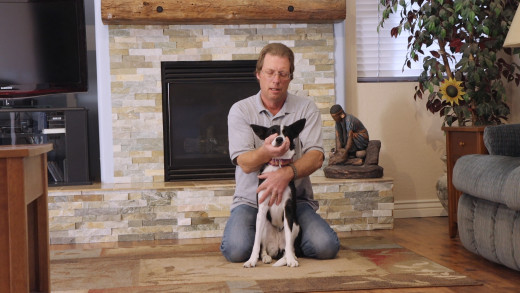
Step 2 - Introducing Movement
Start in the same position as step one. But now, you're going to start moving your dog's head up and down, and back and forth. If they struggle, use the same correction as in step one.
Next, examine your dog's ears. Handle their ears and put your finger partially into their ear canal. Lift their lips and examine their teeth. Check their eyes.
Checking the feet. Many dogs don't like to have their feet handled; you need to get them used to it. Your dog will need to have nails trimmed and maybe thorns or other objects removed from their pads. Touch their toenails, pads, and the webbing between their toes.
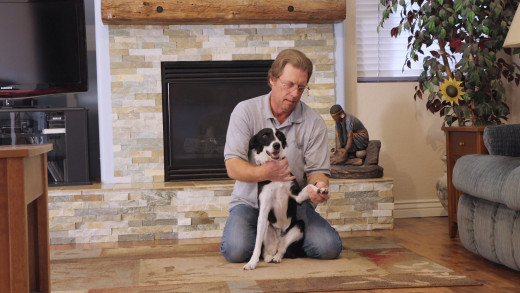
Step 3 - Laying Down
Step 3 involves laying your dog down on his/her side. This last step is where you may have problems if your dog is nervous or skittish. When your dog is laying down on its side like this, he is in a vulnerable position. However, the purpose of this exercise is to develop or improve trust between you and your dog.
You can lay your dog down by telling him to lay down and then rolling him onto his side or you can pick him up and lay him down. I recommend practicing it both ways if your dog is of a size that you can pick him up. The reason is that your dog should be conditioned to being picked up. Also, in the event of an injury where you have to administer aid, he may not want to, or be able to, lay down on his own.
Now, with your dog laying on his side, examine his teeth, eyes, and ears as you did previously. After that, start to move his legs back and forth. Some dogs don't like to have their tail handled so get him used to that as well.
Lastly, start to examine your dog's entire body by massaging and prodding various areas. This is called palpating and is how your vet examines a dog for overall health and to locate the source of injuries or soreness. When you finished one side, roll your dog over and repeat this on the other side.
When you're finished, use a cue such as "All Done." and let your dog get up. Don't make it a huge deal when you're finished. Doing so communicates to your dog that this was an unpleasant exercise. It also makes it harder for your dog to relax if you always have a big party at the end. He'll be looking forward to that and will likely be tense.
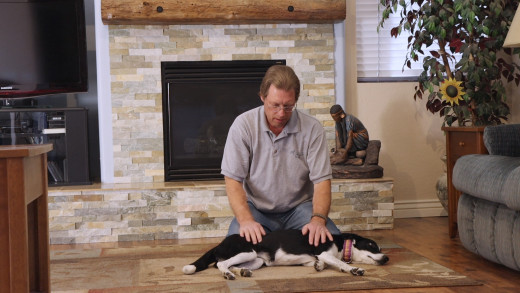
Possible Problems and How to Handle Them
About the only issue that can arise from this exercise is that your dog struggles and won't hold still. Struggling may be due to having a very active dog, a dominant dog, or one that is nervous, skittish, fearful, or that doesn't trust you yet. If you have a dog that is aggressive when you try to restrain him, please consult a professional trainer or behaviorist.
To reiterate, only practice this exercise for very short periods. For dogs that really like to struggle, one of my favorite tools is a Bully Stick. Try distracting your dog by holding the Bully Stick for her and letting her chew on that while you go about examining her. Don't give her the Bully Stick when your finished. By only having access to the Bully Stick during the exercise, it makes the exercise more valuable to your dog.
Handling and Restraint Video
Summary
We can't emphasize enough the benefits of this exercise. Many dogs will come to enjoy it and most will at least tolerate it without protest.
In our classes, we always ask our students what they want to achieve. The answers vary greatly but can almost always be summarized as: "I want a dog that is easy to live with." The handling and restraint exercise is an important part of achieving that goal.
© 2020 Brandy and Steve

